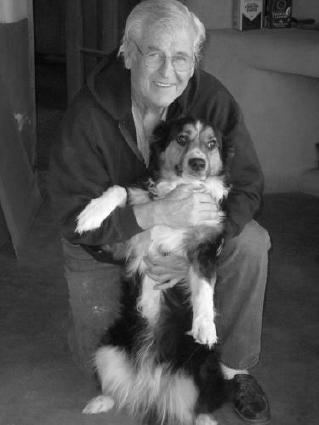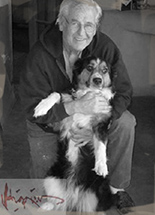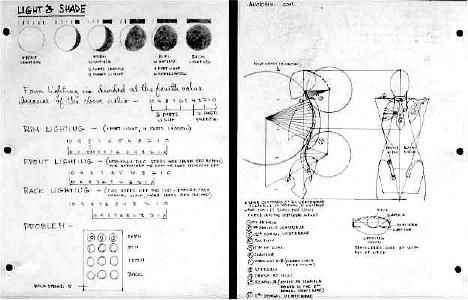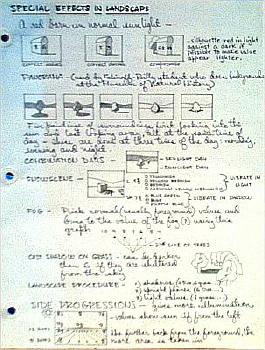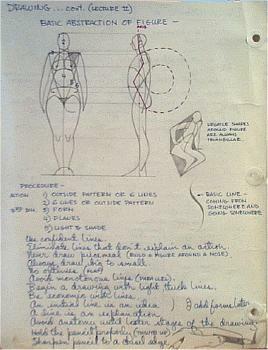The Frank Reilly School of Art
After the Army and in my twenties, I was working as a commercial artist at the Prudential Insurance Company in the Public Relations and Advertising Department. The director of my department was Henry Gasser NA, a well-known watercolor artist, and when I told him I wanted to continue my art studies he suggested the Frank Reilly School of Art. When I was applying to get into Mr. Reilly’s school, I showed him the pencil drawing of the boxers below. He glanced at it and said, “Yes, I can help you with that.
– Doug Higgins


the Art Students League and when I knew him at
the Frank Reilly School of Art.

In addition to teaching, Frank Joseph Reilly was a fine artist, illustrator, muralist, syndicated columnist, after dinner speaker, film producer (on Dean Cornwell, James Montgomery Flagg etc.) and lecturer. He was respected not only for the high quality of his work as an artist and teacher but for the professional achievements of his students. While he was teaching at the Art Students League, (29 years), there was up to a three year waiting list for his classes and his formal lectures were standing room only. He had studied with George B. Bridgman for drawing and was his monitor, Frank Vincent Du Mond for painting and with his friend Dean Cornwell for murals (He later executed a sixty three foot wide mural at the Bronx High School of Science).
The teaching program of Frank Reilly consisted of communicating an accumulation of knowledge and skills beginning with the elementary and building to the complex. He primarily taught the craft of drawing and then painting the nude figure. Each step in his lectures followed logically upon the step which had been previously taught. His students moved forward in their learning with a degree of confidence as skills were accumulating. The lectures included drawings on a blackboard and always began with something humorous. We continued to attend lectures while in the painting class. There were no grades and the length of study was decided by the student.
Mr. Reilly contracted to write four books that were neither completed nor published which is the reason for my undertaking this project. A complete survey of his program, if it existed, would be far more extensive. “The Frank Reilly School of Art” is an honest account of his teaching as I experienced it during the four years or so that I was his student and monitor during the 1960s. It accurately describes the substance of his teaching.
Mr. Reilly had developed the skill of disaggregating the complexities of realism and communicating to his students clearly and specifically. I commuted to Manhattan five nights a week to attend classes at his night school and had finally found a teacher. For the first time in my life I became a dedicated student and came to believe that if I learned what he was teaching I would have a chance at a career in art. It was an honor and a great help financially when he appointed me monitor, first in the drawing and later in the painting class.
A monitor paid no tuition, called the poses, kept order, started off new students and locked up the school. I never missed a night in the over four years I was with him up until his untimely death. The night before he went into the hospital he said, “Well, good night Hig.” and I had to help him find his coat. I stood in the darkened hallway and watched him slowly walk to the elevator and disappear inside.
I never saw him again and the only testaments I can offer are the published books I wrote describing his teaching and the career he gave me which I continue to love. While studying with Mr. Reilly, which is what we all called him, my ambition was to become an illustrator, nearly the only career open to a representational artist in New York at the time. In order to study original illustrations, I would attend exhibitions at the Society of Illustrators where the highest quality current work (some by former Reilly students) could be seen as well as a permanent collection. The best illustrators were skilled in the basic drawing and painting methods I was in the process of learning. These awe-inspiring skills, so painstakingly developed by artists down through the centuries, had been discarded by the various modern art, ‘Isms-of-the-week.’
Select Notebook pages
Mr. Reilly would lecture twice weekly, Tuesday night on drawing and Thursday on painting. The next day during lunch hour at the Prudential in Newark, I would carefully transcribe my notes into a notebook complete with illustrations of drawings he had made on the blackboard.I turned these and the rest of my notebook into a book… “The Frank Reilly School of Art” some forty years later.
The Frank Reilly School of Art by Doug Higgins – The teaching program of Frank J. Reilly consisted of communicating an accumulation of knowledge and skills beginning with the elementary and building to the complex. He primarily taught the craft of drawing and then painting the nude figure. Each step in his teaching followed logically upon the step that had been previously taught. This is an honest account of the substance of his teaching as experienced by the author, Doug Higgins, during the four years or so that he was his student and monitor during the 1960s. (*NOTE: Working to get this re-published.)

Reilly School Sample Illustrations
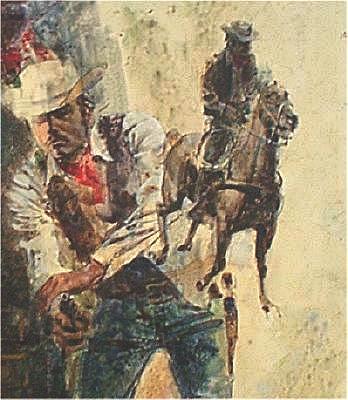

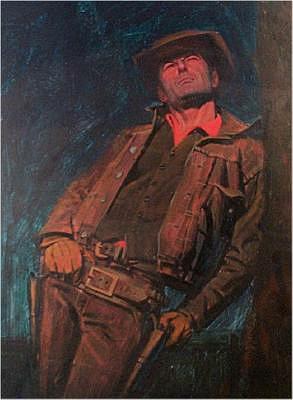


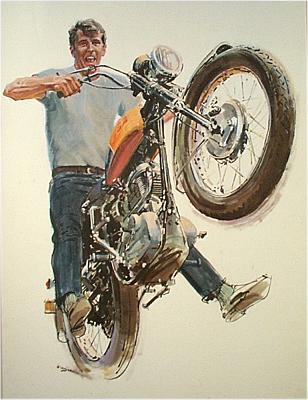

Drawing is the fundament upon which good realistic painting rests. The reason that art students are taught to draw and paint the figure is that the figure demands the highest degree of accuracy. A student may draw the limb of a tree where nature never intended but not an arm or it is immediately noticeable.
Once I was able to draw the figure, learning to draw anything else was within reach. If the ambition is to paint it all; landscapes, seascapes, still life, portraits, figures and animals, the ability to draw with accuracy and grace is the primary prerequisite.
I was taught figure drawing from live models (about a year and a half). I learned; proportion, relationships of the various elements, light and shade, reflected light, halftones, edges, anatomy, planes and forms, perspective, structure, pull points and a graceful use of the drawing implement. I learned an abstraction of the figure over which the drapery, or clothing, is drawn in order to reveal the figure underneath. During the years I spent in Mr. Reilly’s teaching program, I was taught to rely on understanding as opposed to the copying of externals.
“I’m talking about writing, I think you’re talking about typing.”- Truman Capote (drawing versus copying).
DRAWING THE FIGURE
The classes were from seven to ten o’clock each weeknight and included a ten-minute break every hour. The time was kept by the monitor who called the poses and kept order. After a pose was called students were not allowed to enter the room and disturb the class. The poses were five, fifteen and thirty minutes in length beginning with the fives. A nude model was on a model stand two to three feet high and the male models wore jock straps.
A floodlight was placed a few feet higher than the model and directed at about the center of the torso. The placement of the light was such that the entire figure was about 3/5 in the light for the the forty or so students. There were three rows of seats and the row farthest back was elevated. Where the students sat depended on arrival time and preference. The monitor sat in the middle of the first row.
We drew on 9″ x 12″ sheets of loose, smooth newsprint or tracing paper, with a kneaded eraser within easy reach. The paper was secured by a clip at the top of a masonite support. Using a razor blade and fine sandpaper, we fashioned a chisel edge on a 4b or 6b charcoal pencil which kept its shape due to the way it was used during drawing…
DRAWING INSTRUCTION
Hold the charcoal pencil thumb up swinging the wrist and arm to create a graceful line and rest the fingers lightly on the paper. When holding the pencil as if writing and moving the fingers, it can be moved only a few inches but when holding the pencil thumb up and moving the wrist, the range of motion is greatly increased. I began to think of drawing as similar to dance…it with the drawing at a 45 degree angle supported on the back of a chair.

The pencil is in motion before it hits the paper (sometimes with a few mid-air test swings). Draw in a downward motion initially using the “fat” portion of the charcoal for a light wide line. Twist the pencil and use the edge for a sharper, darker line or tip up to the point.
MR. REILLY’S SIX LINE FIGURE

The six line figure is not the way to draw, it’s the way to think…The axis, #4, is an imaginary line through the center of the figure which appears to be straight when viewed from the front.

The abstract figure becomes more life-like as anatomical features are added. Mr. Reilly’s six line abstract figure is the way I was taught to think about the relationships of the various parts and proportions of the figure when drawing. I would initially visualize the abstraction and draw with a wide light line and then, as the drawing progressed, adjust more closely to the forms of the model. As I became more certain of placement the lines became darker and more committed

One great difficulty is the tendency to, ‘tack things on.’ Which is to say, parts of the figure are added to parts already established and the relative lengths and placements are misstated, (frequently due to the model moving). This was overcome by imagining the abstraction and ‘seeing through’ to visualize attachment points, the lengths of body parts and their positions in relation to one another. It was not necessary to ask the model to move to the original position.
BEGINNING A DRAWING
In a standing pose with the weight on one leg, I knew about where the head was, the feet and the center of the figure so I began with these, (known quantities). Related to the head, I knew about where a thrust out hip was, the other hip in relation to this, the angle of the shoulders, (with the rib cage), and so on…

RELATIONSHIPS
Action is the direction of the movement of the figure, initially established with a wide, light line.nA line comes from somewhere and goes somewhere. I formed the habit of constantly looking for relationships when drawing, making certain every line was in relationship to something else.
By first indicating the head, then the center, (crotch), and then the base, I didn’t draw from the top down and hope the feet would be on the page.
A drawing isn’t exact so mistakes were made on the side that would help, eight heads high instead of seven, for instance.
The word relationship in this context means that the position of everything on the figure was found by finding imagined connections.
“Relationship” was the word most used by Mr. Reilly, (drawing and painting) and was key to placement, shape, balance, proportion and structure.

DRAPERY
Art school drapery studies. The cowboy and the man with the sunglasses are from photographs.

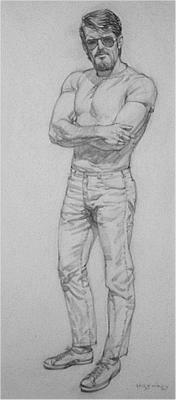

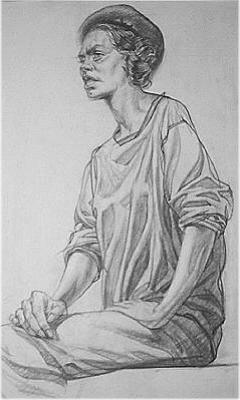

When drawing a figure with clothing, be conscious of form, action and tailoring. Think of supporting surfaces, gravity, pull points and structure based on the six line abstraction.
Drapery is used to design a figure and is mostly fairly straight lines and the shapes of folds is generally triangular.
Keep drapery on the form underneath.
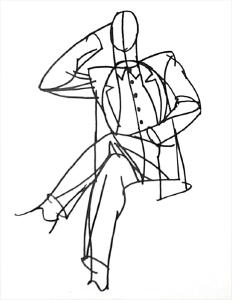
HOLDING A LOCAL
This demonstration piece shows a White, a Gray and a Black cube. These are their local values. The White cube is lightest in the light and the shadow, the Gray cube is intermediate in the light and the shadow and the Black cube is darkest in the light and the shadow. These relationships remain constant on the three visable planes of the three boxes. The cast shadows do not change. A simple way to say this is that… a White box will not be Black on the shadow side. Holding the relationships of the values (and color) true in both the light and the shade is called…’holding a local’.

ACKNOWLEDGEMENTS
To Frank J. Reilly, my undying gratitude for lighting the way and providing an excellent example of how to live a life.
Rudy Hornish had been a professor of English at Seton Hall University before he came to work at the Prudential Insurance Company where I first met him. We both became New York actors and stayed in touch over the years. Rudy eventually became an Executive Producer with Paramount Pictures. Thank you, my friend, for your guidance and encouragement.
Charles Movalli, is the editor of number of fine art books and former contributing editor to American Artist Magazine. Charles is an accomplished and gifted artist as well and a friend. Thank you for your helpful and needed editorial advice and content suggestions.
Candido Rodriguez had been the monitor of the drawing class when I first enrolled in the Reilly School. He has been of great assistance, supplying me with details missing from my Art School notebook.
My appreciation to Susan McGarry, former editor-in-chief of Southwest Art magazine who began this project by suggesting I write an artist statement and recommending a list of possible headings.
And, for your interest, thank you! My great hope is that you are finding my books worthy of your time and of assistance.
Fare well!
Doug Higgins
